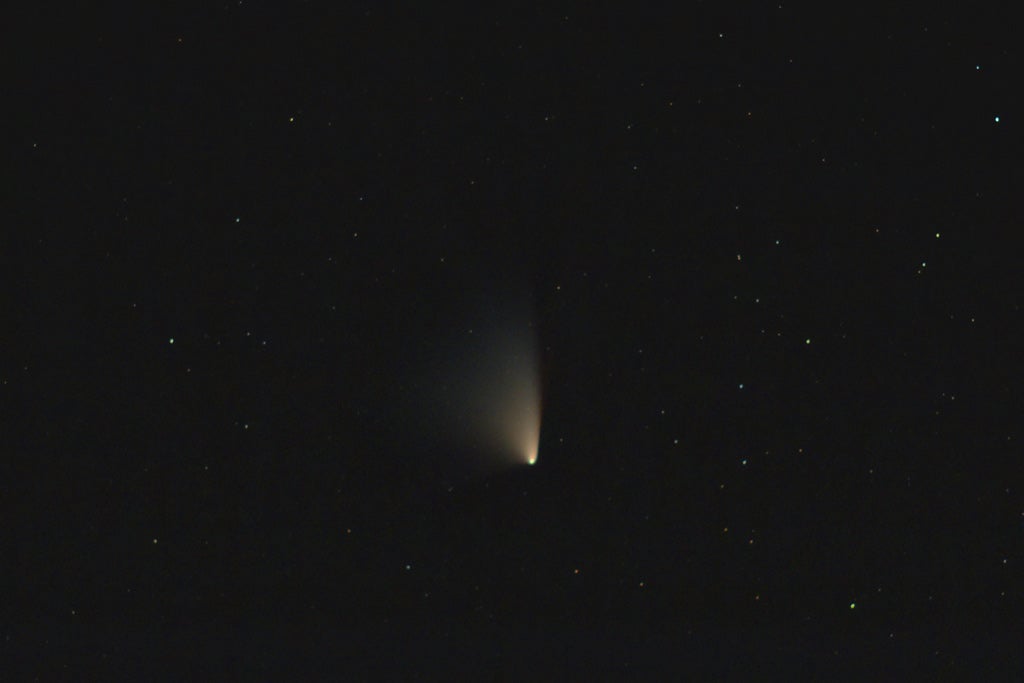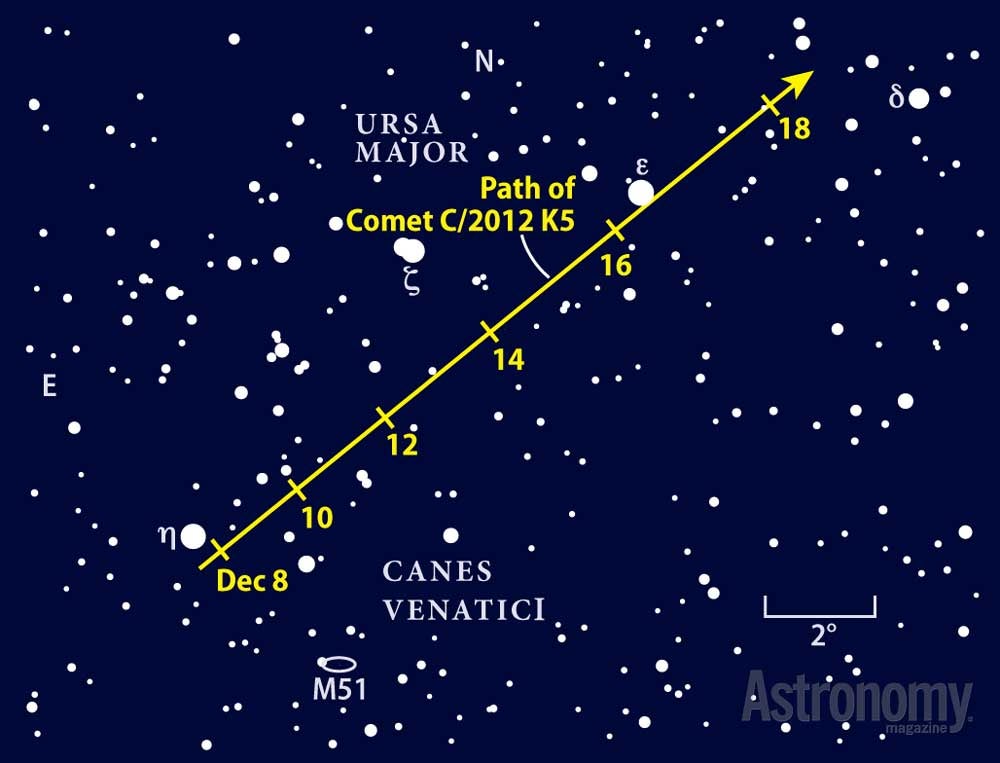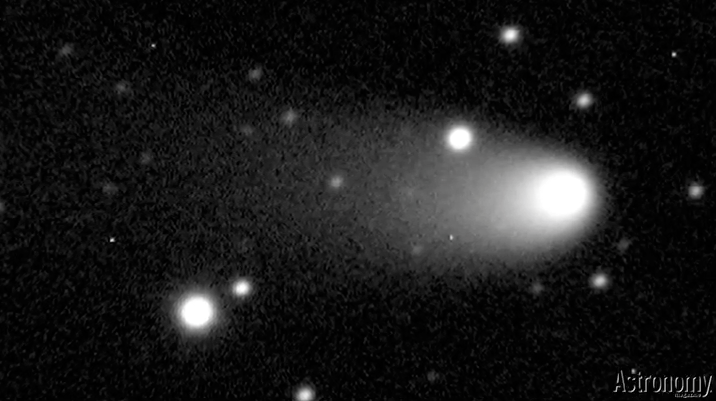So far, Comet PANSTARRS has hit every prediction related to its brightness. It arrived at perihelion (its closest approach to the Sun), on the evening of March 9 in North America. It appeared most brilliant — with a total magnitude of –1.0 — at that point, when it stood approximately 28 million miles (45 million kilometers) from our daytime star.
For complete coverage of Comet PANSTARRS, visit www.astronomy.com/panstarrs.
By April 19, Comet PANSTARRS has put 49° between itself and the Sun. The comet shines a bit fainter than 5th magnitude — still bright for a comet but a shadow of its former glory — having lost a full magnitude approximately every week since perihelion. Although the Moon will be a day past First Quarter, you’ll easily find the comet through binoculars in the early morning hours (after moonset) located between magnitude 2.2 Schedar (Alpha [α] Cassiopeiae) and magnitude 2.3 Caph (Beta [β] Cassiopeiae).
During May and June, Comet PANSTARRS continues to diminish in brightness, but it also never sets during this time for most locations in the United States. By July 1, it glows at magnitude 11 in the constellation Ursa Minor, but its dark-sky presence will be better because its distance from the Sun will have increased to nearly 80°. You’ll need a medium-size telescope and an eyepiece that magnifies about 50x to track the comet down. When you do find the small, faint smudge, take some time to smile and remember its former glory.
- Special Coverage: Find everything you need to know about Comet PANSTARRS in Astronomy.com’s Year of the Comet section.
- Video: Get ready for Comet PANSTARRS, with Senior Editor Richard Talcott
- StarDome: Locate Comet C/2011 L4 (PANSTARRS) in your night sky with our interactive star chart. To ensure the comet is displayed, click on the “Display…” drop-down menu under Options (lower right) and make sure “Comets” has a check mark next to it. Then click the “Show Names…” drop-down menu and make sure “Comets” is checked there, too.
- Images: Check out our special Comet PANSTARRS photo gallery or submit images of Comet PANSTARRS to our Online Reader Gallery.
- Discussion: Ask questions and share your observations in our Reader Forums.
- Sign up for our free weekly email newsletter.













